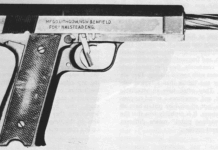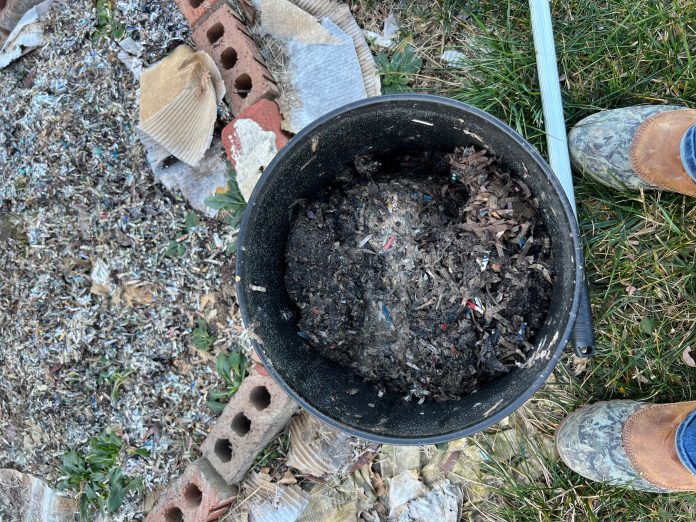
With the insane cost of groceries these days, are you considering starting a garden in the spring? Are you an established gardener who is looking for ways to reduce your reliance on commercial fertilizers and composts as prices for those also rise amid global inflation and war pressures? What if I told you that there was a completely free way of producing fertilizer/compost/mulch this winter for your garden beds in the spring?
I’m still “new” at this too, but. I’ve been gardening now for about four years. Personally, every dollar I spend on the garden has to justify itself, as that ultimately increases the cost of producing my food. I have often referred to myself as “The CheapAss Gardener”. I’m always looking for low and no-cost ways to improve my food-producing efforts. From reusing and repurposing materials to composting and collecting rainwater, there’s always something new I’m trying. Thus, I’m sharing a way I found to produce free compost/fertilizer with which to overlay my garden beds this winter.
Free Nitrogen Source
Those who already compost kitchen waste know that for good breakdown you need a balance of nitrogen sources and carbon sources. But what if you only cook for one person so your kitchen scraps as a nitrogen source are limited?
What if I told you that you produce an absolutely free and sterile nitrogen source from your own body every single hour of every single day? Yep, Urine.
Wait, come back! Before you reject this due to the ick factor, let’s talk about a few things. First and foremost, unlike “humanure” which requires very specific, careful, and long term handling to avoid spreading pathogens, urine is sterile when it exits the body. It may pick up a little skin bacteria during collection but this is minimal and generally not a concern, unless you have an infection, in which case you should wait. Likewise you should be careful and not collect urine if you are on certain medications or chemo drugs, as these can be excreted into the urine. There doesn’t seem to be much research about how long these medications may persist once exposed to the elements out in the soil, so best to refrain until there is more science on this. In addition to nitrogen, urine also contains many trace minerals – including potassium and phosphorous – which are essential for proper plant growth.
Collection
Personally, I keep a peanut butter jar and a jug in the downstairs bathroom for collection. You can choose whatever method makes you comfortable. Just remember that if you’ve changed your children’s diapers or clean up after your dog or cat, this is not any more “icky” than that. People with livestock should have zero qualms. But if you have livestock then you already have fertilizer at hand, so this advice is more for suburban yard gardeners like myself who have HOA rules which forbid raising little manure producers. And FYI – Dog and cat waste is NOT considered safe to use in food production, so please don’t.
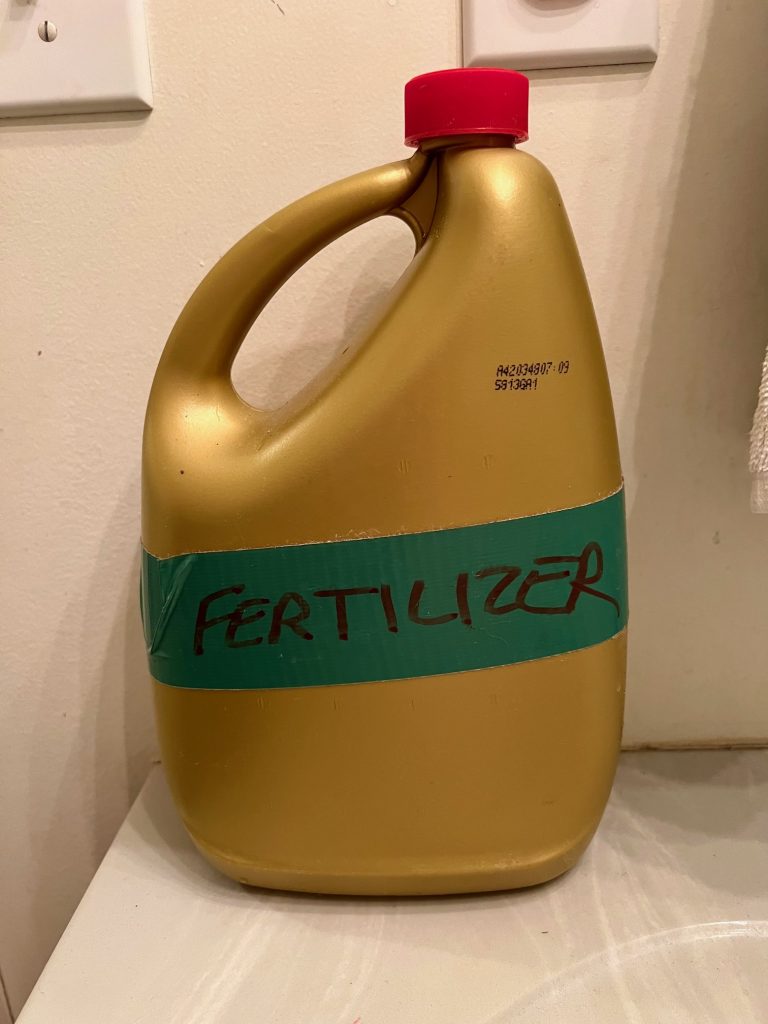
The Science
For the skeptics, in addition to the fact that using urine in the garden was a time honored tradition before the advent of indoor plumbing, there is also hard data research. You can google it yourself, but I’ve provided a few links here.
http://www.ecosanres.org/pdf_files/ESR2010-1-PracticalGuidanceOnTheUseOfUrineInCropProduction.pdf
https://www.scientificamerican.com/article/human-urine-is-an-effective-fertilizer/
https://www.growveg.com/guides/pee-cycling-for-gardeners/
Ways To Use
Urine can be used “straight” – dumped right onto your compost pile to jumpstart it if the nitrogen balance has gotten low. You can also dilute it to use when watering your tomatoes, squash, corn, etc. once your garden is established. I personally do not use urine fertilizer on crops that will soon be harvested near or in the ground, such as lettuce, carrots, etc. But I do use it to prepare the ground for new seeds, as it will be months until harvest/consumption.
But what if you still have some “ick” about using it straight and need something to do “now” in the wintertime/off season? How about using urine to create bulk compost to put on top of your beds over the winter? Let me tell you what I’ve been doing for the past four years or so.
Shredded paper
We’ve talked about the urine for a nitrogen source. But what about a carbon source? Lacking an abundance of straw or dead leaves, I’ve been using shredded paper. My definition of “paper” is loose. I shred junk mail (without the plastic windows), cereal boxes, catalogs, pizza boxes, old bills, Amazon boxes, fast food bags, toilet paper rolls, newspapers – you get the idea. I do not worry about colored inks, which haven’t contained heavy metals for decades. Nor do I worry about “glossy” pages, which involves a clay coating and not plastic. The only thing I avoid is plastic – because it doesn’t break down. Thus, I tear off the clear windows from bill envelopes. You’d be surprised how much reusing this trash paper reduces your curbed garbage every week, too.

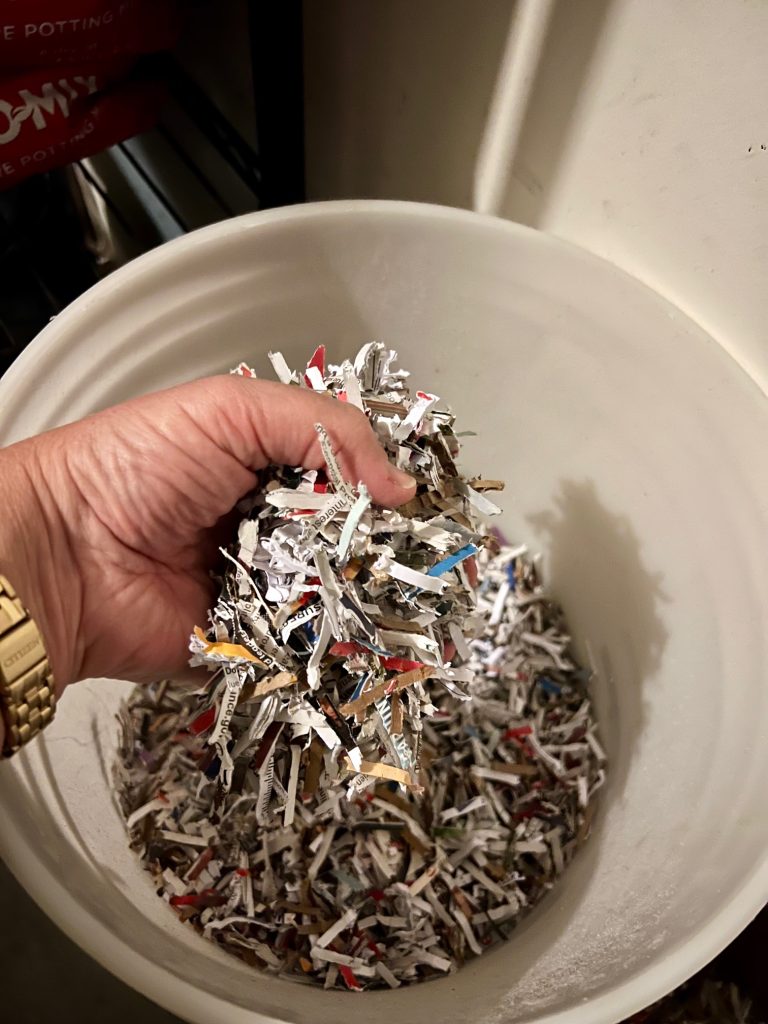
Pee Compost
What I do is collect the urine for a day or two in the aforementioned jug, then in a reused potting soil bag in a tub in the garage I layer shredded paper sprinkled with used garden soil for a bacterial jumpstart. I gradually pour the urine over the layered paper – slowly, to allow it to absorb and not run right to the bottom. This process gets repeated over the week, adding more layers until the bag is full. I then upend the bag into a lidded plastic tub or bucket. This mixes it up a bit and allows the soil organisms to work and cure for a few weeks or a month until this tub is eventually full. Meanwhile I repeat the process, gradually filling the bag again on a roughly weekly basis.
When the tub is full I carry it from the garage to the garden and dump the contents into an overwintering bed. By this point the urine/paper compost will have been working for several weeks but will not be completely broken down yet. It doesn’t seem to matter. After raking it out to distribute it a bit, I walk away and let the weather and worms continue to break things down until spring.
Admittedly this does smell a little manure-ish when you first dump it out, but that smell dissipates quickly and should not offend your neighbors. I notice no odor in my garage until I open the lid. But if this bothers you there is no reason you can’t keep the tubs outside, it’s just a little more inconvenient that way. Also, the colder temps will suppress bacterial action for the breakdown. But it will break down eventually.

Bed Volume Expander
Yet another option for this mixture is to use it as a volume expander when starting new garden beds or tubs. In the vein of lasagna gardening or hugelkultur this can be used as an under layer to help you use less bagged soil. I have done this in the past, and when I needed to change that soil to a new container for various reasons (like container breakage) I found that this under layer had broken down into a deep black organic layer which had been feeding the roots of my happy plants.
Containers
I noticed over the years that the 10 gallon tub I used to store and transport this mixture was getting heavy to haul around when full – so much so that the handles broke. Thus, I have switched to a series of lidded five gallon buckets instead (even cat litter buckets work) to make them easier to carry. I have used heavy contractor bags in the past, but I hated throwing them away, and am moving more toward re-used and re-usable materials as I go along.
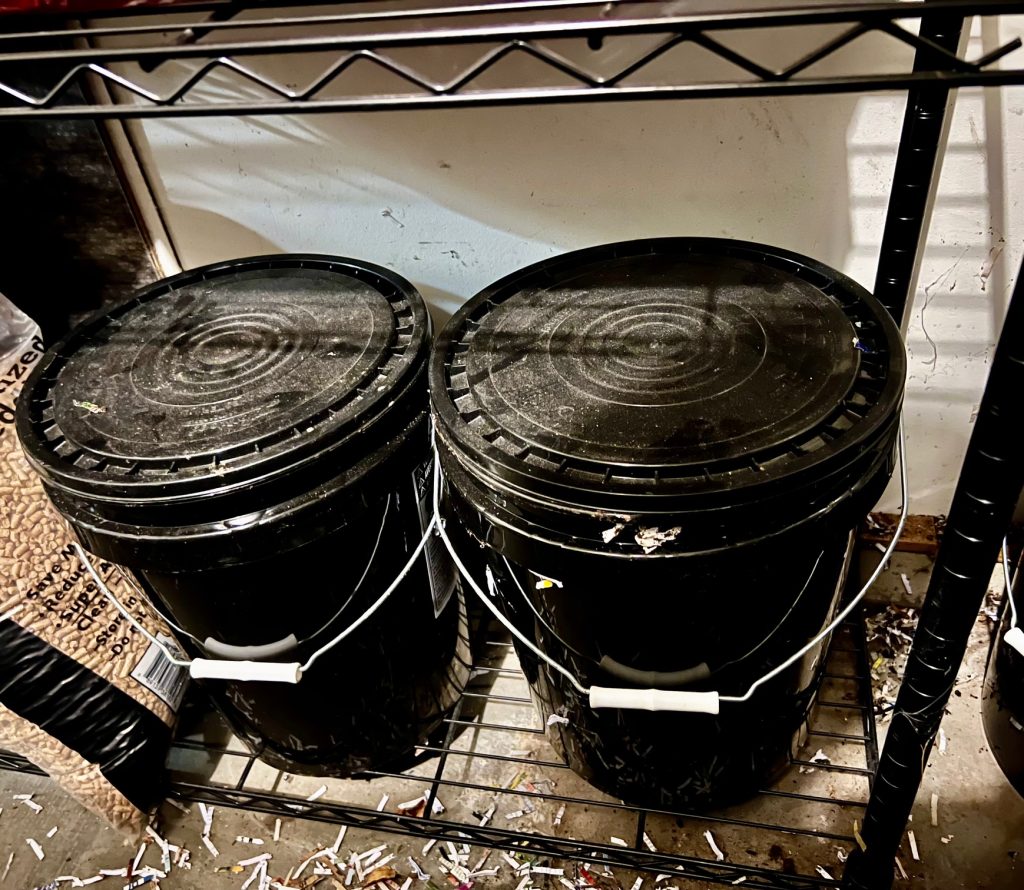
Winter is the perfect time to plan ways to get a jumpstart on your spring inflation garden. My seed catalogs have already begun to arrive, so I am in the mood “now” even before Christmas. Starting some pee compost is one way to get that jumpstart.
This is by no means an exact science or an exhaustive tutorial. You may have other ideas which work well or even better for you. I encourage you to do some reading and research. Consider this merely an introduction to the possibilities for completely cost-free garden amendments which will increase your soil fertility and decrease your grocery bills. Happy Gardening!


